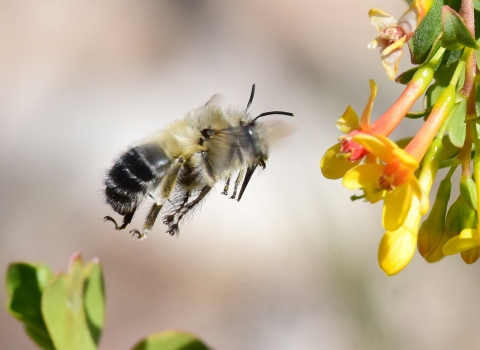Monarch butterflies migrate remarkable distances. Their delicate, colorful wings can carry them across hundreds, even thousands of miles to reach warm, ancestral destinations – places monarchs have migrated to for millenia. This long journey has to start somewhere. What if that journey started in the palm of your hands?
At Patuxent Research Refuge’s Visitor Center, guests of all ages can learn about the monarch butterfly life cycle through videos and exhibits depicting their stages of development at the Monarch Magic Station. During monarch season -- from April to early November -- visitors are invited to view live caterpillars in different stages of development, watch the butterflies emerge from their chrysalises, and sign up to help release the butterflies when they are ready to fly.
The Monarch Magic Station began in 2018 when volunteer Barrie Hershkowitz brought nearly 30 years of experience leading students through monarch education to Patuxent Wildlife Refuge. With tagging and tracking assistance from University of Kansas’ Monarch Watch, supply donations from Friends of Patuxent, and the aid of volunteers, Patuxent Research Refuge guests have now helped release thousands of monarchs.
Monarch butterflies are a vital part of the ecosystems they pollinate and beautify. But over the last several years, monarch numbers in North America have declined due to habitat loss and climate change climate change
Climate change includes both global warming driven by human-induced emissions of greenhouse gases and the resulting large-scale shifts in weather patterns. Though there have been previous periods of climatic change, since the mid-20th century humans have had an unprecedented impact on Earth's climate system and caused change on a global scale.
Learn more about climate change , prompting the U.S. Fish and Wildlife Service to step up proactive efforts to improve the species’ status.
Even if you aren’t able to make your way to Patuxent Wildlife Refuge, you can support monarchs during long journeys when they must rest along the way in green spaces that provide nectar and shelter. Here are some ways you can help nurture monarchs as they make their way through your community this year:
- Plant milkweed if you have a space. Monarch caterpillars exclusively munch on milkweed and the flower’s pink-and-white blossoms are a wonderful addition to any garden.
- Support local efforts in your community to establish and maintain habitat corridors for pollinators, like urban gardens and roadside milkweed “way stations.”
- Learn more about pollinators by checking out stories from FWS.






